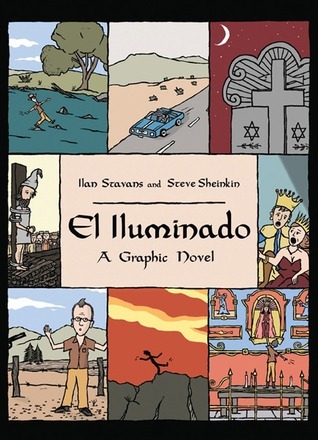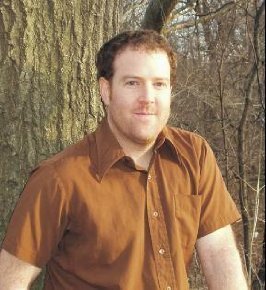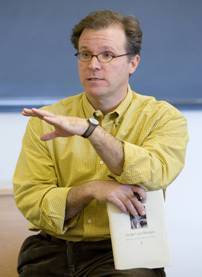
When young Rolando Perez falls to his death from a cliff outside Santa Fe, New Mexico, the mysteries immediately begin to accumulate. Was he pushed or did he jump? What are the documents that Rolando was willing sacrifice himself to protect from his family, the police, and the Catholic Church? And what does a colorful concha pastry have to do with any of this? In the midst of the investigation, Professor Ilan Stavans arrives in Santa Fe to give a lecture about the area's long-buried Jewish history. He's looking forward to relaxing afterwards with an evening of opera, but his presentation on "crypto-Jews" attracts unexpected attention, and soon Ilan is drawn into a desperate race to find the long-lost documents that might hold the key to Rolando's death. Ilan's detective work leads him to taco joints, desert ranches, soaring cathedrals, and, finally, deep into the region's past, where he encounters another young man: Luis de Carvajal, aka "El Iluminado," a sixteenth-century religious dissenter. In a tale of martyrdom that eerily echoes Rolando's, Carvajal fled Spain for colonial Mexico at the height of the Spanish Inquisition, searching for his religious heritage—a hunt for which he, like Rolando, would pay the ultimate price. In El Iluminado, esteemed literary critic Ilan Stavans and author and illustrator Steve Sheinkin present a secret history of religion in the Americas, showing how thousands of European refugees have left a trail of ghostly footprints—and troves of mysteries—across the American Southwest.
Authors

From: http://stevesheinkin.com/about/ I was born in Brooklyn, NY, and my family lived in Mississippi and Colorado before moving back to New York and settling in the suburbs north of New York City. As a kid my favorite books were action stories and outdoor adventures: sea stories, searches for buried treasure, sharks eating people… that kind of thing. Probably my all-time favorite was a book called Mutiny on the Bounty, a novel based on the true story of a famous mutiny aboard a British ship in the late 1700s. I went to Syracuse University and studied communications and international relations. The highlight of those years was a summer I spent in Central America, where I worked on a documentary on the streets of Nicaragua. After college I moved to Washington, D.C., and worked for an environmental group called the National Audubon Society. Then, when my brother Ari graduated from college a few years later, we decided to move to Austin, Texas, and make movies together. We lived like paupers in a house with a hole in the floor where bugs crawled in. We wrote some screenplays, and in 1995 made our own feature film, a comedy called A More Perfect Union (filing pictured below), about four young guys who decide to secede from the Union and declare their rented house to be an independent nation. We were sure it was going to be a huge hit; actually we ended up deep in debt. After that I moved to Brooklyn and decided to find some way to make a living as a writer. I wrote short stories, screenplays, and worked on a comic called The Adventures of Rabbi Harvey. In 2006, after literally hundreds of rejections, my first Rabbi Harvey graphic novel was finally published. Meanwhile, I started working for an educational publishing company, just for the money. We’d hire people to write history textbooks, and they’d send in their writing, and it was my job to check facts and make little edits to clarify the text. Once in a while I was given the chance to write little pieces of textbooks, like one-page biographies or skills lessons. “Understanding Bar Graphs” was one of my early works. The editors noticed that my writing was pretty good. They started giving me less editing to do, and more writing. Gradually, I began writing chapters for textbooks, and that turned into my full-time job. All the while, I kept working on my own writing projects. In 2008 I wrote my last textbook. I walked away, and shall never return. My first non-textbook history book was King George: What Was His Problem? – full of all the stories about the American Revolution that I was never allowed to put into textbooks. But looking back, I actually feel pretty lucky to have spent all those years writing textbooks. It forced me to write every day, which is great practice. And I collected hundreds of stories that I can’t wait to tell. These days, I live with my wife, Rachel, and our two young kids in Saratoga Springs, New York. We’re right down the road from the Saratoga National Historical Park, the site of Benedict Arnold’s greatest – and last – victory in an American uniform. But that’s not why I moved here. Honestly.
